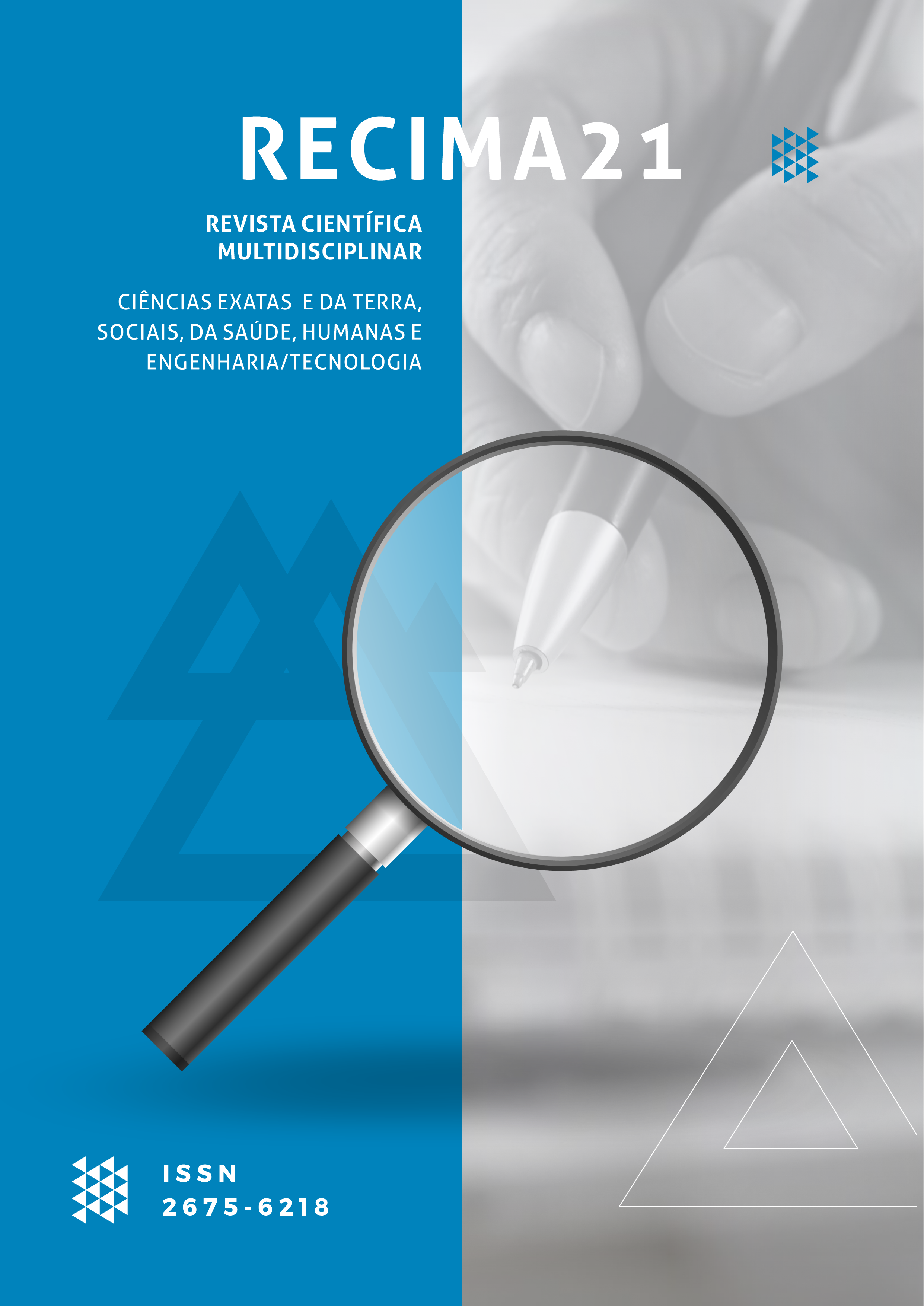SESGO DE CONFIRMACIÓN EN LA TOMA DE DECISIONES DE INNOVACIÓN
DOI:
https://doi.org/10.47820/recima21.v3i7.1744Palabras clave:
innovadores potenciales necesitan superar muchos desafíosResumen
Los innovadores potenciales necesitan superar muchos desafíos. Uno de estos desafíos es el sesgo de confirmación en la toma de decisiones. La evolución humana ha programado al cerebro para que actúe rápidamente ante una amenaza en el medio ambiente. De esa manera, pensar y (instantáneamente) actuar racionalmente es casi imposible para la mayoría de las personas. Esto causa varios efectos negativos en la toma de decisiones, notificadamente sesgos cognitivos. Por ejemplo, un emprendedor que quiere lanzar un nuevo producto al mercado tiende a convencerse a sí mismo de que su producto es innovador, ignorando la evidencia de lo contrario, siendo esto un sesgo de confirmación. Un análisis innovador de las causas y consecuencias del sesgo de confirmación en la toma de decisiones en innovación es el objetivo principal de este artículo.
Descargas
Citas
Amabile, T. M., & Pratt, M. G. (2016). The dynamic componential model of creativity and innovation in organizations: Making progress, making meaning. Research in Organizational Behavior, 37, 157–183.
Andrew, J. P. & Sirkin, H. L. (2006). Payback. Boston: Harvard Business School Publishing Corporation.
Ariely, D. (2009). The end of rational Economics. Harvard Business Review. Available at https://hbr.org/2009/07/the-end-of-rational-economics, (Accessed on 28 June 2020).
Ariely, D. & Berns, G. (2010). Neuromarketing: the hope and hype of neuroimaging in business. Nature Reviews Neuroscience, 11 (4), 284–292.
Berns (2009). Iconoclast. Boston: Harvard Business Review Press.
Beshears, J. & Gino, F. (2015). Leaders as decision architects. Harvard Business Review. Available at https://hbr.org/2015/05/leaders-as-decision-architects, (Acessed on 22 November 2021).
Carter, R. (2009). Brain. London: DK.
Chavaglia, J., Filipe, J. A. & Caleiro, A. B. (2019). Creativity and innovation: a contribution of behavioral economics. International Journal of Innovation Studies. 3 (1), 12 - 21.
Chavaglia, J., Filipe, J. A., Ferreira, M. A. & Calliari, I. B. (2014). Motivation at work of Brazilian executives. International Journal of Latest Trends in Finance & Economic Sciences. 4 (2), 717 - 724.
Chavaglia, J., Filipe, J. A. & Ramalheiro, B. (2013). Neuroeconomics: the effect of context in decisions relating to the Brazilian electric sector. IIOAB Journal, 4 (3), pp 38 - 44.
Epstein, S.; Pacini, R.; Denes-Raj, V.; Heier, H. (1996). Individual differences in intuitive-experiential and analytic- rational thinking styles. Journal of Personality and Social Psychology, 71, 390–405.
Evans, J.; Stanovich, K. E. (2013). Dual-process theories of higher cognition: advancing the debate. Perspectives on Psychological Science, 8(3), 223–241.
Fox, J. (2015). From economic man to behavioral economics. Harvard Business Review, 93 (5), 79 – 85.
Frazzeto, G. (2013). How we feel – what science can – and can´t – tell us about our Emotions. New York: Doubleday.
Gary, L. (2006). Fighting cognitive deviations. Making Smart Decisions. Boston: Harvard Business School Press, 109 – 116.
Gaudeul, A., Crossetto, P. & Riener, G. (2017). Better stuck together or free to go? Of the stability of cooperation when individuals have outside options. Journal of Economic Psychology, 59, 99 - 112.
Hippel, E. V., Thomke, S. & Sonnack, M. (1999). Creating breakthroughs at 3M. Harvard Business Review. Available at https://hbr.org/1999/09/creating-breakthroughs-at-3m, (Accessed on 20 January 2022).
Hodgkinson, G. P., & Healey, M. P. (2014). Coming in from the cold: The psychological foundations of radical innovation revisited. Industrial Marketing Management, 43(8), 1306–1313.
Kim, W. C. & Mauborgne, R. (1997). Value Innovation: The Strategic Logic of High Growth. Harvard Business Review. 103 - 112.
Kounios, J. & Beeman, M. (2015). The eureka factor: aha moments, creative insight, and the brain. Independently Published.
Krstić, M. (2012). The role of rules in the evolution of the market system: Hayek’s concept of evolutionary epistemology. Economic annals, 57(194), 123-140.
Krstić, M. (2014). Rational choice theory and addiction behaviour. Market-Tržište, 26(2), 163-177.
LeDoux, J. (1996). The emotional brain: The Mysterious Underpinnings of Emotional Life. New York: Simon & Schuster.
Lieberman, M. D. (2007). Social cognitive neuroscience: A review of core processes. Annual Review of Psychology, 58, 259–289.
Lindstrom, M. (2008). Buyology: Truth and lies about why we buy. Sidney: Currency Press.
Loewenstein, G., Rick, S. & Cohen, J. D. (2008). Neuroeconomics. Annual Review of Psychology, 59, 647 - 672.
Luca, M. (2021). Leaders: stop confusing correlation with causation. Harvard Business Review. Available at https://hbr.org/2021/11/leaders-stop-confusing-correlation-with-causation, (Accessed on 20 January 2022).
Sandroni, P. (2007). Dicionário de economia do século XXI. Rio de Janeiro: Record.
Schopenhauer, A. (2013). The art of literature. Star Publishing, e-book Kindle.
Schumpeter, J. A. (1983). The theory of economic development. Transaction Publishers, e-book Kindle.
Silva, R. & Filipe, J. A. (2013). The homo neuroeconomicus: a window for the future. IIOAB Journal, 4 (3), 31 - 37.
Soll, J. B., Milkman, K. L. & Payne, J. W. (2014). Outsmart your own biases, Harvard Business Review. Available at https://hbr.org/2015/05/outsmart-your-own-biases, (Accessed on 4 November 2021).
Tetlock, P. & Gardner, D. (2015). Superforecasting: The Art and Science of Prediction. New York: Crown Publishers.
Thaler, R. & Sunstein, C. (2009). Nudge Improving Decisions About Health, Wealth, and Happiness. New York: Penguin Books.
Vergara, S. (2004). Projetos e relatórios de pesquisa em administração. São Paulo: Atlas.
Weinhold, B. (2006). Epigenetics: the science of change. Environmental Health Perspective. Available at https://www.ncbi.nlm.nih.gov/pmc/articles/PMC1392256/, (Accessed on 18 April 2021).
Descargas
Publicado
Cómo citar
Número
Sección
Categorías
Licencia
Derechos de autor 2022 RECIMA21 - Revista Científica Multidisciplinar - ISSN 2675-6218

Esta obra está bajo una licencia internacional Creative Commons Atribución 4.0.
Os direitos autorais dos artigos/resenhas/TCCs publicados pertecem à revista RECIMA21, e seguem o padrão Creative Commons (CC BY 4.0), permitindo a cópia ou reprodução, desde que cite a fonte e respeite os direitos dos autores e contenham menção aos mesmos nos créditos. Toda e qualquer obra publicada na revista, seu conteúdo é de responsabilidade dos autores, cabendo a RECIMA21 apenas ser o veículo de divulgação, seguindo os padrões nacionais e internacionais de publicação.













